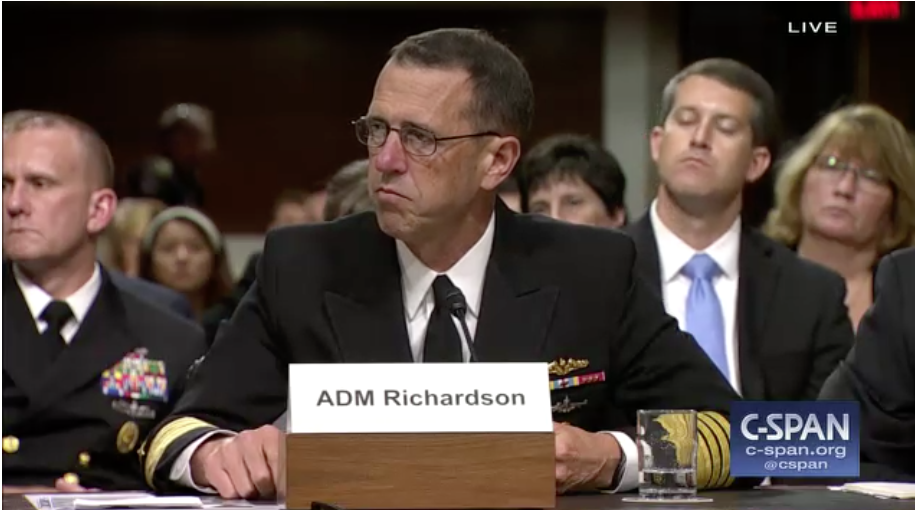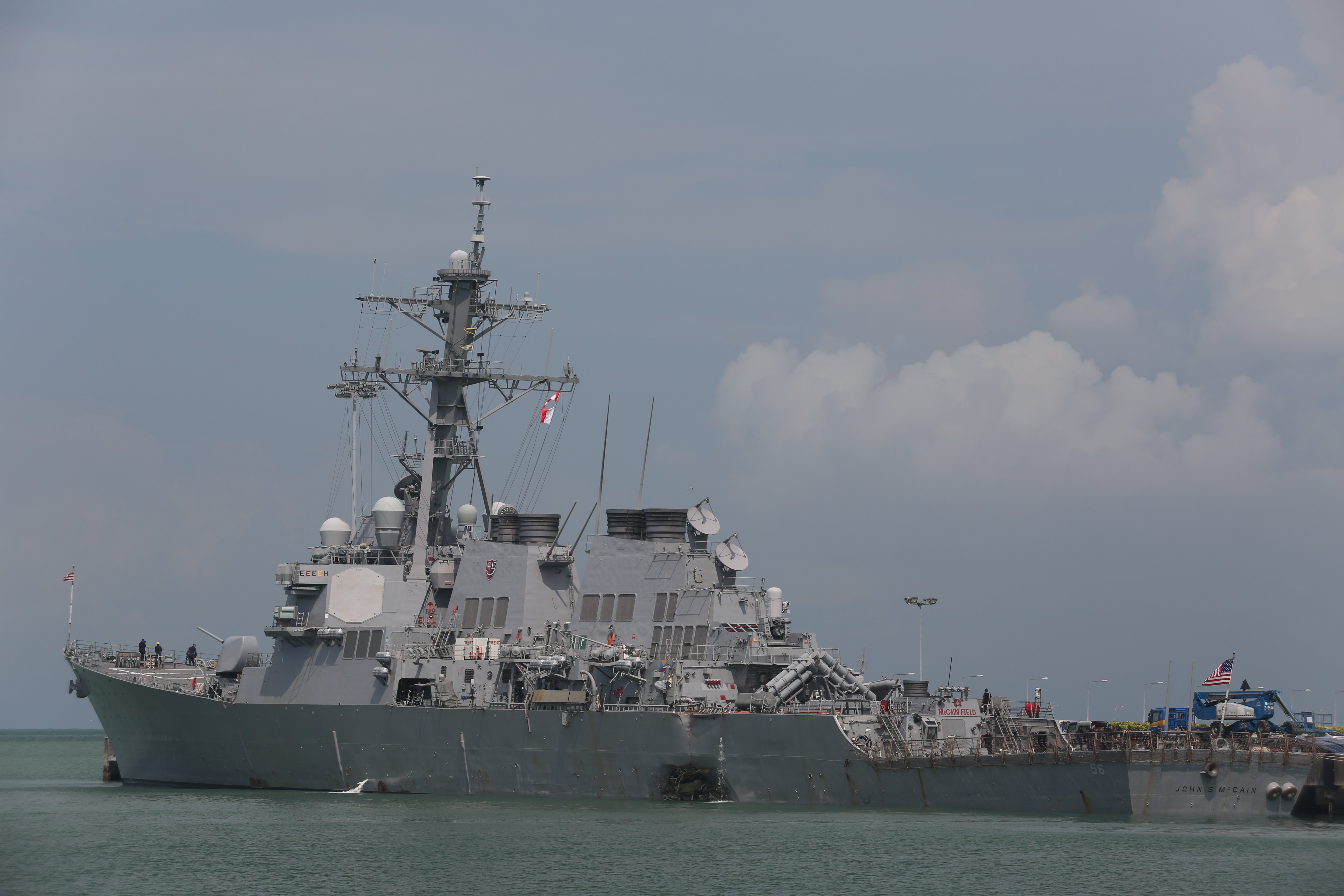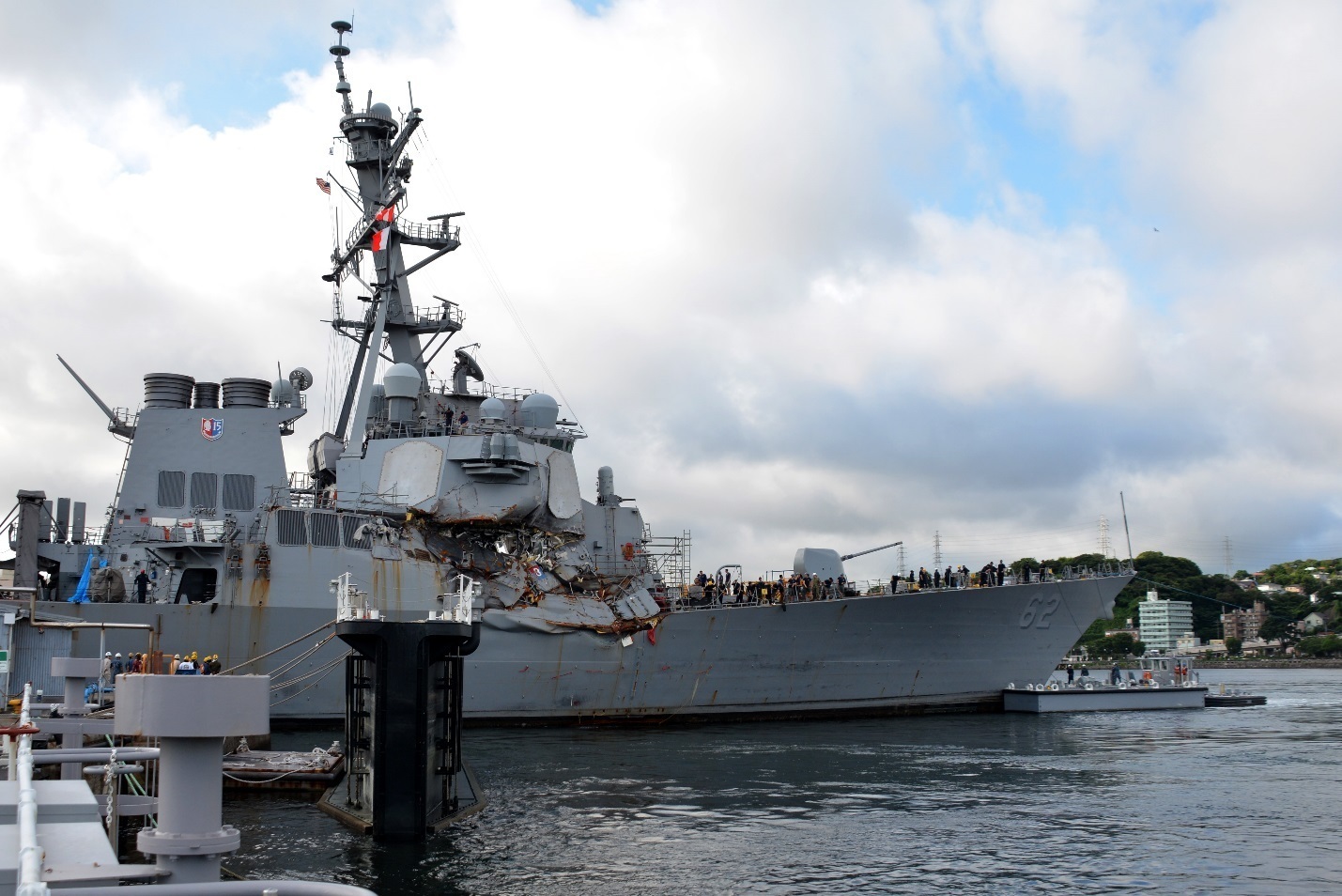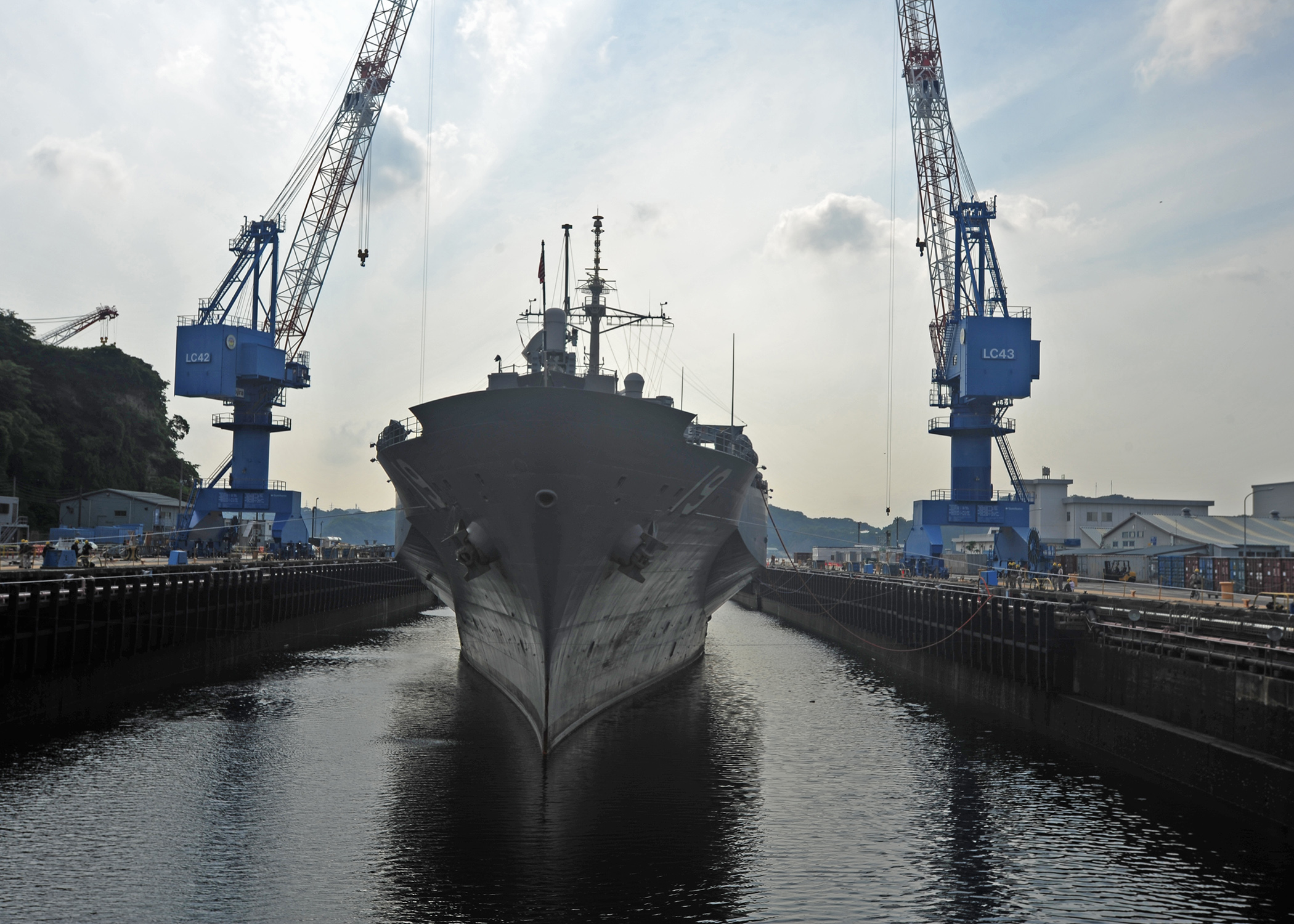
CAPITOL HILL — The Navy has been largely unable to say no to missions it’s been tasked to do in the Pacific despite not having dedicated training time or keeping up with required certifications, the chief of naval operations said in a Tuesday Senate Armed Services Committee, highlighting the bad confluence of high-demand, low resources and a “can-do attitude” within the service.
The Navy has doubled its number of forward deployed naval forces ships operating out of Japan since 2006 – a bump from 20 to 40 ships – but those ships do not follow the Optimized Fleet Response Plan readiness generation model that includes dedicated time for ship maintenance and crew training ahead of rotational deployments. Instead, with the FDNF ships out for more frequent shorter deployments, dedicated training and certification time is often skipped right over to deal with more immediate operational concerns, CNO Adm. John Richardson conceded at the hearing to discuss the Navy’s recent surface ship mishaps, two of which were fatal and killed 17 sailors this year.
“If you look at the plan for forward deployed naval forces, there is a dedicated time, that’s the plan – but the [Government Accountability Office] rightfully looked at execution data, and it’s hard to determine adherence to that plan because we just prioritized getting out and executing the mission. The thing that would fall off is the dedicated training,” Richardson said, acknowledging a 2015 GAO report on the FDNF ships and a recent update to the report ahead of this week’s hearing.
As a result of skipping over that training time, the cruisers and destroyers operating out of Japan are currently lacking 37 percent of their required certifications in everything from basic ship handling and navigation to advanced warfare areas like anti-air warfare and missile defense.
Richardson called lacking some certifications “pervasive” within the FDNF fleet during the hearing.

“Just about every ship has some element of their certification expired. And that can be managed if it’s one thing — an advanced warfare mission for instance, they just don’t assign them to that mission,” he said.
“Where it becomes troublesome is if it becomes too many areas, and particularly in those areas that are directly related to safe and effective operations, the fundamentals.”
SASC Chairman Sen. John McCain (R-Ariz.) said in his opening statement that “the McCain (DDG-56) had expired training certifications in six out of the 10 key warfare mission areas. The Fitzgerald (DDG-62) had expired certifications in all 10 mission areas.” The guided-missile destroyer USS John S. McCain is named after the senator’s father and grandfather – both four-star admirals – who served as a U.S. Pacific Command commander in the Vietnam War era and a World War II air operations director and carrier task for commander, respectively.
Richardson did not confirm those numbers to USNI News after the hearing but did say that Fitzgerald’s missing certifications were “much broader” than those for McCain.
Richardson said he wants to address the high percentage of expired certifications, but he also wants to address the culture that led to commanding officers accepting missions when the ship and crew aren’t ready for deployment.
“We have a can-do culture, that’s what we do. Nobody wants to raise their hand and say I can’t do the mission, but it’s absolutely essential that when those are the facts we enable that report,” CNO said.
“We don’t meet more than 50 percent of the combatant commanders’ demands as it is, it’s from a force structure standpoint and a combination of that and readiness. And there have been times where I’ve spoken with my subordinate commanders where there’s just insufficient time to get a force trained and certified to meet the deployment date, and we have to go back to the combatant command and say you’re going to have to wait.”
Asked if requesting a delay in deployment date would negatively affect a commanding officer, Richardson said no and added that “if I could go down and give that commander a handshake and a medal I would do that. This is exactly the type of honesty and transparency we need to run a Navy that’s safe and effective.”

Asked by Sen. Elizabeth Warren (D-Mass.) if it was “irresponsible” to allow a ship to deploy with an expired certification, Richardson likened the certifications to a driver’s license.
“What had happened in those areas, ma’am, is that the team out there was conscious that these certifications were expiring. And it’s a bit like your driver’s license expiring – it may not necessarily mean that you don’t know how to drive any more, it’s just that expired,” he said.
“However, we do need to recognize that … they need to go back and recertify. What had happened instead is that they would do an evaluation, and say hey, your certification is expired, we’re not going to get a time to get onboard and do the certification for some time, so we’ll do a discussion or administrative review to extend that. It’s called a risk-mitigation plan. That became pretty pervasive, so it was kind of this boiling frog scenario that over time, over the last two years really, became acute.”
Later in the hearing he acknowledged the dramatic increase in expired certifications over the last two years and said, “if that certification has meaning, then we’ve got to do the damn certification, and we can’t just walk by it and try and talk our way out, that hey we’re still proficient even though the cert’s expired. That’s just not an acceptable way to do business.”
John Pendleton, the GAO’s director of defense force structure and readiness issues, said at the hearing that the FDNF’s “aggressive” deployment schedule led to the bulk of today’s certification problems.
“The assumption was the 7th Fleet, because it was perpetually in motion, it was ready,” he said at the hearing.
“I think you’ve got to make time for them to train, you’ve got to make space in the schedule for them to actually train and get those certifications,” he said. Additionally, “you need to assess whether or not increasing reliance on overseas-based ships is the best call, because that comes at a cost, and some of them may be hidden.”

While Pendleton noted longer-term challenges for Navy readiness – its projected fleet buildup in the out-years is not yet supported by matching personnel increases, for example – he said a near-term focus of not just the Navy but the whole Defense Department ought to be a serious look at how to generate ready forces and for what investment.
“Last year in 2016, we looked at the readiness rebuilding plans of all of the military services, including the Navy, as well as how the Department of Defense was overseeing it. We came away with the conclusion, not to put too fine a point on it, that they didn’t have a comprehensive plan for how they were going to go forward,” Pendleton said.
“There was a lot of recognition of the problems, a lot of priority being assigned to it, but what we couldn’t see was: If you put money in, how much readiness were you going to get out? And also, there was the question of how you were going to manage the demand. What we suggested – hopefully that was practical – was: What are your goals? In some cases the goals weren’t clear to us. How much are you going to be able to get next year and the year after that? What’s it going to cost? How long is it going to take? Our concern was that we’d look up in five years and be in the same situation.”
Richardson conceded the Navy needed to better plan its readiness generation, noting as an example that “we need to have a comprehensive understanding of what it takes to sustain that forward-deployed force from a maintenance, training, infrastructure standpoint, people, the whole thing.”





